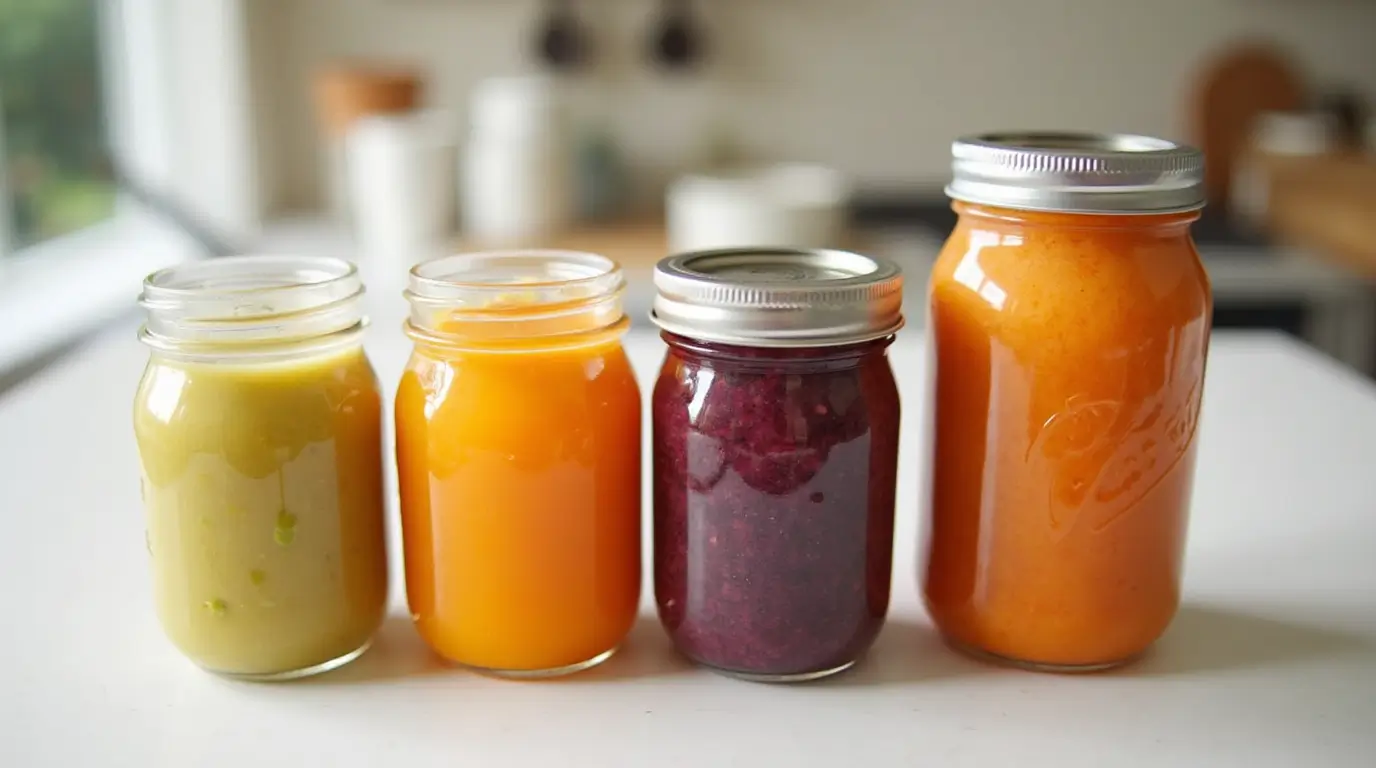Stage 2 Baby Food
Table of Contents
As your baby grows, so does their curiosity for new flavors, textures, and meals. Transitioning to Stage 2 Baby Food marks an exciting milestone in your little one’s journey toward independent eating. It’s a time of exploration, learning, and building strong nutritional foundations for life.
In this comprehensive guide, we’ll explore everything you need to know about Stage 2 Baby Food, including when to start, what foods to introduce, and how to make the process smooth and enjoyable for both you and your baby.
What is Stage 2 Baby Food?
Stage 2 Baby Food refers to the next step after initial weaning, typically introduced between 6 to 8 months of age. At this point, babies are ready for thicker purees, small soft chunks, and a wider variety of ingredients, including gentle combinations of fruits, vegetables, grains, and proteins.

Unlike Stage 1 foods, which are usually single-ingredient purees, Stage 2 meals are about blending flavors and slightly challenging your baby’s palate and digestion.
Differences Between Stage 1 and Stage 2 Baby Food
It’s important to understand the differences so you can confidently support your baby’s development. Here’s a quick breakdown:
Comparing Stage 1 vs. Stage 2 Baby Food
| Feature | Stage 1 Baby Food | Stage 2 Baby Food |
|---|---|---|
| Age Range | 4–6 months | 6–8 months |
| Texture | Thin, smooth purees | Thicker purees with soft small pieces |
| Ingredients | Single foods (e.g., carrots, apples) | Mixed foods (e.g., apple-carrot blend) |
| Portion Sizes | 1–2 tablespoons per meal | 2–4 tablespoons or more per meal |
| Feeding Focus | Introduce tastes, allergy watch | Explore textures, encourage chewing skills |
When and How to Transition to Stage 2 Baby Food
Most babies are ready for Stage 2 around 6 months, especially if they:
- Can sit with minimal support.
- Show interest in your food.
- Handle Stage 1 purees easily.
Transition Tips:
- Introduce new textures gradually.
- Mix familiar flavors with new ones (e.g., apple + spinach).
- Follow your baby’s lead—some may need more time adjusting.
For a helpful overview of earlier feeding stages, visit our detailed “4 Months Baby Food Chart” to ensure a smooth progression.
Nutritional Needs at 6–8 Months
As babies grow, their bodies require more nutrients to support brain development, bone strength, and overall health. Stage 2 Baby Food should start meeting those needs through a wider variety of foods.

Key Nutrients:
- Iron: Vital for brain development (sources: pureed meats, fortified cereals).
- Zinc: Supports immunity and growth.
- Vitamin A and C: Boost eye health and immune system.
- Protein: Builds muscles and tissues.
You can learn more about comprehensive infant nutrition at “Nutritional Requirements for Babies 0-12 Months”.
Best First Foods for Stage 2 Babies
Here are some nutritious and baby-approved options:
- Fruits: Apples, pears, bananas, peaches, blueberries.
- Vegetables: Sweet potatoes, peas, carrots, zucchini.
- Grains: Oatmeal, quinoa, rice.
- Proteins: Lentils, pureed chicken, mild white fish.
- Dairy (small amounts): Full-fat yogurt.
Combination ideas:
- Sweet potato + apple
- Banana + avocado
- Chicken + carrots
Remember, Stage 2 Baby Food is about variety and introducing mild combinations to expand your baby’s taste preferences.
Homemade vs. Store-Bought Stage 2 Baby Food
Choosing between homemade and store-bought options is personal. Both can be healthy if approached carefully.
Homemade Baby Food Advantages:
- Total control over ingredients.
- Fresher taste and texture.
- Cost-effective.
Store-Bought Baby Food Advantages:
- Convenient for busy days.
- Safe and regulated.
- Wide variety available.
Whichever you choose, prioritize:
- No added sugar or salt.
- Organic when possible.
- Simple ingredient lists.
Sample Meal Plans and Feeding Schedule for Stage 2 Babies
By 6–8 months, many babies are eating 2–3 meals a day alongside breast milk or formula. Here’s a sample:
Stage 2 Baby Food Weekly Meal Plan
| Day | Breakfast | Lunch | Dinner |
|---|---|---|---|
| Monday | Oatmeal + banana puree | Carrot + lentil mash | Avocado + peach blend |
| Tuesday | Pear + quinoa cereal | Zucchini + chicken puree | Sweet potato + apple mix |
| Wednesday | Rice cereal + blueberry mash | Peas + turkey blend | Yogurt + banana |
| Thursday | Avocado + oatmeal | Carrot + chickpeas puree | Apple + spinach blend |
| Friday | Pumpkin + rice cereal | Broccoli + potato mash | Banana + sweet potato |
| Saturday | Full-fat yogurt + peach puree | Squash + chicken | Pear + carrot blend |
| Sunday | Blueberry + quinoa cereal | Lentils + spinach blend | Zucchini + banana mash |
Tip: Offer a small sip of water with meals to practice drinking.

Common Challenges and Solutions During Stage 2
Challenge: Baby refuses thicker textures.
Solution: Start with slightly thicker purees and gradually increase chunkiness.
Challenge: Allergy concerns.
Solution: Introduce new foods one at a time, waiting 3–5 days between.
Challenge: Gagging.
Solution: Gagging is normal and different from choking. Always supervise and offer appropriate textures.
Consistency is key when introducing Stage 2 Baby Food—babies often need multiple exposures to accept new foods.
How Stage 2 Prepares Babies for Stage 3 and Finger Foods
Stage 2 is not just about nutrition; it’s about skill-building:
- Oral Motor Skills: Handling different textures prepares for chewing.
- Hand-Eye Coordination: Learning to bring food to mouth.
- Self-Feeding: Moving towards finger foods and utensils.
By exploring diverse flavors and textures now, you set the stage for a confident, adventurous eater in the toddler years.
Conclusion: Final Tips for Mastering Stage 2 Baby Food
Transitioning to Stage 2 Baby Food is a beautiful adventure filled with messy smiles, surprising preferences, and important milestones. Stay patient, flexible, and responsive to your baby’s cues.
Final Tips:
- Trust your baby’s appetite—they know when they are full.
- Celebrate small victories (like the first taste of broccoli!).
- Keep meals fun and stress-free.
- Offer variety early and often.
With love, care, and a little patience, you’ll nurture healthy eating habits that can last a lifetime.

